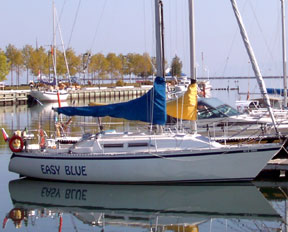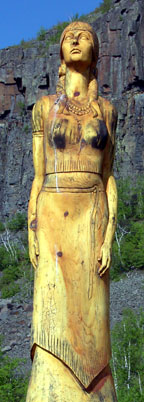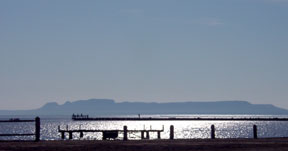Forestry and mining dominate this part of the world. All of the towns are one-industry, or, if fortunate, two-industry, with mining being the second of two evils. Forestry prevails from here west to the border with Manitoba but there are scattered production mines for gold or other metals.

The road isn’t the greatest, although it is well maintained. It’s all two-lane blacktop at best, with the occasional passing lane to break the monotony. Straight stretches are at a premium, and during summer the ‘Bagos, boat trailers and semis are tough to get past.
Deer and moose prevail. Hitting a 1,200 pound moose is no picnic, and although the deer are much smaller, at speed they too will make quite a mess out of a car.
Fuel isn’t a problem along this route. There’s plenty of every kind you might want to buy, although you may have to spend some time looking for a particular octane in town.
 North of Wawa the road heads inland for 116 miles and then Marathon comes into view on a peninsula into Lake Superior. There are three gold mines east of Marathon, but you won’t be stopping for a tour to see the sights. You’ll never get in.
North of Wawa the road heads inland for 116 miles and then Marathon comes into view on a peninsula into Lake Superior. There are three gold mines east of Marathon, but you won’t be stopping for a tour to see the sights. You’ll never get in.
Since the road now follows the shore, fog and rain are a problem any time the wind is out of the south or southwest, and then it becomes just another road to get past. When the sun is out, as it was today, it’s a beautiful ride along some of the most scenic roadway in North America.
There are plenty of small communities along this part of the Trans-Canada Highway. Any time you want a scenic overlook, just pull off the road into one of them and you’ll be delighted by the view. Depending on the size, you might even be able to get a coffee or a meal – but don’t count on it.

By the time Thunder Bay came into view it was late afternoon and time for a break.
I lived here for ten years when I was flying for a living. It’s a jewel in the middle of nowhere, a lunch-bucket town with grain elevators and paper mills located at the head of the lakes. In former times it was a huge shipping center for both lakeboats and salties to traverse the Great Lakes through the lock system at Sault Ste. Marie and into the Gulf of St. Lawrence.

I made a quick stop at the Terry Fox monument for a view across the bay to see the Sleeping Giant in all its glory. In twenty minutes I’ll be chowing down at a tiny little Chinese restaurant in the west end of Ft. William on Aurhur Street, not far from where I used to live.
